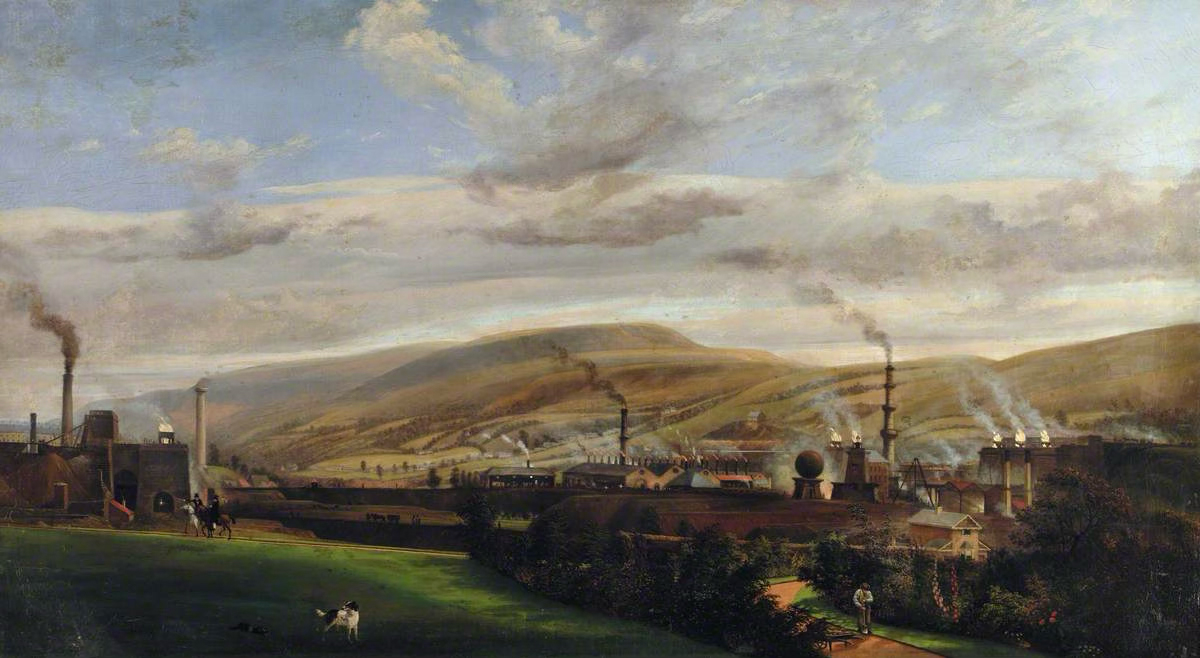The Bute Ironworks – the Egyptian Furnace Mystery


The Bute Ironworks started in 1824, when William Foreman (“Billy Ready Money”), Thomas Foreman and Thomas Johnson began to build three furnaces on land leased from the Marquis of Bute on the west (Glamorgan side of the River Rhymney, in competition to the Union Ironworks which had started in 1801.
From 1825, both works operated together under Foreman & Co, after they bought the former Union Ironworks from the Hall family. The blast furnaces of the Bute Ironworks 'were of a somewhat pretentious style of architecture, having a front of Egyptian design.'
A record from 1826 states 'The new Bute Ironworks of Messrs. Forman and Co., in the neighbourhood of Merthyr Tydfil, are already in of considerable forwardness. Three of the blast furnaces are nearly completed. The engine-house is a fine building in the Egyptian style of architecture. Notwithstanding the stagnation, and consequent extreme distress experienced in most of the manufacturing districts through the kingdom, the ironworks of Merthyr Tydfil and neighbourhood are actively carried on.'
The actual design of these Egyptian Furnaces remains a matter of debate today. It appears the original plan was to build 24 furnaces in an Egyptian style, which was hugely fashionable at that time. Designed by John MacCulloch, they were said to resemble the temples of Dendera in Egypt with eventually six were built between 1824 and 1839.
Two fabulous early paintings of them by renowned industrial artist Penry Williams shows an impressive globe structure on top of one the furnaces, as well as minaret-like narrow towers close by.

However, the prevailing view nowadays is that these elaborate additional structures, whilst perhaps planned, were never actually built and that the actual furnaces, as shown in an 1870s photograph by Alfred Freke, were less ornate than shown in the paintings - a case of artistic licence by Williams.

One of the most skilled jobs in the production of wrought iron was puddling, carried out by puddlers after which the Puddlers Arms is named.
Puddlers used a furnace to convert pig iron, or crude iron, into refined wrought iron which could be hammered or rolled for use. Often a puddler and helper would work as a two-man crew, producing as much as 1.5 tons of iron in a 12-hour shift. The task was hot, physically hard, and dangerous and undoubtedly some would have sought relief from strains and injuries in the hands of Rhymney’s famous bonesetters in Jerusalem Street.

Most of those frequenting the Puddlers Arms to slake their thirst after a hot shift would have been employed in the Bute Ironworks located just across the riverbank. The main product of the Rhymney Ironworks, at first, was wrought iron rails and the title of the company changed to Rhymney Iron Company Limited in 1874.
They started producing steel rails in 1876, and the following year it was estimated they would be able to manufacture five hundred tons of steel rails each week. At this time the company was recorded as owning eight hundred houses in Rhymney as well as shops and the brewery.
The works ceased making wrought iron in 1884. In 1891 they abandoned steelmaking as well when this turned out to be a unprofitable. The furnaces and plant were dismantled in the same year, but the company continued to exist as a coal mining enterprise owning pits in Rhymney, including the Mardy Pit, as well elsewhere in the Rhymney valley.
By 1894, they operated eight pits in Rhymney employing around 1800 workers, reaching a peak of around 3000 workers in all their collieries in the valley by about 1910.